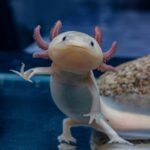Discovering the Rio Apaporis Caiman
The Rio Apaporis Caiman is a unique creature that piques the curiosity of both scientists and enthusiasts. Found in the remote regions of South America, it remains an elusive subject of study due to its secluded habitat. Unlike its well-known relatives like the American alligator, the Rio Apaporis Caiman inhabits an entirely different ecosystem within the tropical rainforest of Colombia and Brazil.
Habitat and Geography
The caiman resides in the Rio Apaporis, a river flowing through the Amazon basin, specifically around the Vaupés Department in Colombia and extending towards Amazonas in Brazil. The area is rich in biodiversity, supporting countless species of flora and fauna. The river itself provides a vital source of sustenance and shelter for this particular type of caiman.
This region is characterized by dense forest cover and a humid climate, which together create an ideal environment for caimans. This habitat offers ample opportunities for hunting and breeding, with plentiful access to water and a variety of prey. Navigation through these waters isn’t easy due to the lush overgrowth and frequent rains, contributing to the caiman’s secluded existence.
Physical Characteristics
The Rio Apaporis Caiman exhibits several distinct physical traits that differentiate it from other caimans. Generally smaller in size, these creatures have a more slender build, facilitating their movement through their dense, forested habitat. Their skin displays a unique pattern, providing excellent camouflage amidst the riverine landscapes and jungle underbrush.
Their eyes and snouts are adapted for an aquatic lifestyle, aiding them as they hunt along the riverbanks. The nostrils are equipped with special valves that allow the caiman to remain submerged underwater for extended periods. This aids in both hunting and avoiding predators, although adult caimans have few natural threats.
Diet and Behavior
Caimans are opportunistic feeders, adapting their diet to what is available within their environment. The Rio Apaporis Caiman favors fish, smaller amphibians, and occasional birds. They are often seen lurking near vegetated areas where they ambush unsuspecting prey. Their streamlined bodies enable them to swiftly cut through water with little noise, making them effective hunters.
Social structures among caimans can be observed during the breeding season. Males tend to be territorial, displaying competitive behavior to establish dominance. This ensures the strongest traits are passed down to future generations. Nesting takes place on riverbanks, where females lay eggs and vigilantly guard them until they hatch. Temperature dictates the gender of the offspring—a common trait among reptiles known as temperature-dependent sex determination.
Conservation Status
The conservation status of the Rio Apaporis Caiman remains uncertain. Due to their remote habitat, detailed studies are challenging, and their population numbers are not well-documented. The caiman faces potential threats from habitat destruction, primarily due to deforestation and human encroachment. These activities disrupt the delicate ecosystem balance upon which the caiman relies.
Efforts to protect their habitat are crucial, encompassing broader conservation strategies aimed at preserving the rich biodiversity of the Amazon. Local and international organizations are involved in these initiatives, striving to safeguard not only the caiman but the myriad species that share its ecosystem.
Cultural and Ecological Significance
This caiman holds ecological significance as an apex predator within its environment. By maintaining the population of its prey, it plays a role in regulating the ecological balance of the rainforest. These dynamics contribute to the health and diversity of the ecosystem, impacting everything from water quality to plant growth.
The Rio Apaporis and its inhabitants are also deeply embedded in indigenous cultures. Local communities recognize and respect the caiman, intertwining its presence with their folklore and traditional beliefs. To them, the caiman represents a symbol of strength and adaptability, integral to the stories passed down through generations.
Research and Exploration
To better understand the Rio Apaporis Caiman, research efforts continue with a focus on field studies and the application of technology. Biologists and ecologists utilize satellite imaging and GPS tracking to monitor caiman movements and behaviors from afar. Drones and remote cameras are increasingly employed to observe these creatures without human intrusion, minimizing the risk of altering their natural behavior.
Expeditions into the area remain delicate operations that require extensive planning and respect for the environment. Researchers work closely with indigenous communities to ensure sustainable practices, blending scientific inquiry with traditional knowledge. These partnerships can reveal data otherwise inaccessible through conventional means alone.
Challenges and Future Perspectives
Future research into the Rio Apaporis Caiman faces various challenges. The isolated nature of their habitat poses logistical difficulties in terms of accessibility and weather conditions. Moreover, securing funding and resources for such specialized studies can be arduous. Nevertheless, the potential discoveries offer vast insights into not only the caiman itself but the broader scope of the Amazonian ecology.
As efforts to explore and learn from the Rio Apaporis Caiman progress, the hope is to uncover information that will contribute to conservation efforts and ecological education. The caiman remains a symbol of nature’s intricacies and the delicate balance within its ecosystems. The pursuit of knowledge in this domain reflects a broader commitment to understanding and preserving the natural world.
“`




Subscribe for Updates
Get the latest articles delivered to your inbox.
We respect your privacy. Unsubscribe anytime.